A Data-Driven Guide to the Highest-Returning Large-Cap Mutual Funds and ETFs for Long-Term Growth
Understanding Large-Cap Funds: A Foundation for Smarter Investing
Large-cap funds are investment vehicles that focus on companies with market capitalizations exceeding $10 billion, offering investors exposure to some of the most stable and well-established businesses in the market. These funds play a critical role in portfolio construction by providing consistent returns, lower volatility, and dividend income. Investors can access large-cap exposure through various fund types, including index funds that track benchmarks like the S&P 500, actively managed funds that aim to outperform the market, and ETFs that offer liquidity and tax efficiency. Evaluating these options requires a close look at historical returns, risk-adjusted performance, and expense ratios, all of which can significantly impact long-term outcomes.
Want expert insights from leading investment podcasts? Scroll to the end to the Podcast Transcripts📜
What Makes Large-Cap Funds a Core Investment Choice
Large-cap funds are investment vehicles that focus on companies with a market capitalization of over $10 billion. These funds typically include industry leaders with strong financials, global operations, and a history of consistent performance. Companies like Apple AAPL, Microsoft MSFT, and Johnson & Johnson JNJ are common holdings in large-cap portfolios due to their market dominance and investor trust. Large-cap companies are known for their resilience during economic downturns and their ability to generate steady cash flows.
Many of these firms pay regular dividends, making them attractive to income-focused investors. For deeper insights into how large-cap funds fit into modern portfolios, the Market Trends Podcast recently explored their role in navigating inflation and rate hikes. One expert noted, "Large-cap funds are the ballast in turbulent markets—anchoring portfolios when volatility spikes." ⏳ At the 20:15 mark, analysts discussed how dividend-paying large caps help offset inflationary pressures.
The Investor Insights Podcast examined how institutional investors are leaning into large-cap ETFs for stability and liquidity. ⏳ At the 22:40 mark, they discussed how large-cap allocations are evolving in response to global macroeconomic shifts and sector rotations.
Sources:
Top-Performing Large-Cap Funds in 2025: Growth Leaders and Performance Trends
In 2025, large-cap growth funds have continued to outperform broader market indices, driven by strong earnings from technology and consumer discretionary sectors. Standout performers include Fidelity Contrafund [FCNKX], JPMorgan Large Cap Growth R6 [JLGMX], Schwab US Large-Cap Growth ETF [SCHG], Vanguard Mega Cap Growth Index [VMGAX], and MainStay Winslow Large Cap Growth [MLRSX]. These funds have consistently ranked in the top third of the large-growth category over 1-, 3-, and 5-year periods.
For example, FCNKX and JLGMX have delivered 5-year annualized returns exceeding 13%, while SCHG and VMGAX have benefited from their exposure to AI-driven tech giants like Microsoft MSFT and Apple AAPL. The debate between actively managed and index-based large-cap funds remains relevant. Actively managed funds like Fidelity Contrafund and MainStay Winslow aim to outperform benchmarks through strategic stock selection, often with higher expense ratios. In contrast, index-based options like SCHG and VMGAX offer lower fees and broad exposure to mega-cap growth stocks.
For deeper insights into fund performance, the Market Trends Podcast recently analyzed how large-cap growth funds are navigating 2025’s macroeconomic shifts. One expert noted, "Index funds are winning the long game, but active managers are finding alpha in overlooked sectors." ⏳ At the 21:10 mark, analysts discussed how fund managers are rotating into AI and healthcare to sustain momentum.
The Investor Insights Podcast explored how fund flows are favoring large-cap ETFs for their liquidity and tax efficiency. ⏳ At the 23:25 mark, they discussed how performance metrics like Sharpe ratio and alpha are guiding investor decisions in fund selection.
Sources:
How to Evaluate Large-Cap Fund Performance: Metrics That Matter
Key metrics like annualized returns, Sharpe ratio, alpha, and beta provide a clearer picture of how a fund performs relative to its risk. Annualized returns show the average yearly gain over a specific period, helping investors compare funds on a consistent basis. The Sharpe ratio measures risk-adjusted returns—higher values indicate better compensation for the risk taken. Alpha reveals how much a fund outperforms its benchmark, while beta indicates its sensitivity to market movements. Expense ratios are another critical factor, especially for long-term investors.
Actively managed funds often have higher expense ratios due to research and trading costs, while index funds and ETFs typically offer lower fees. For instance, the Schwab US Large-Cap ETF SCHX has an expense ratio of just 0.03%, making it a cost-effective option for passive investors. The Market Trends Podcast recently explored how institutional investors use performance metrics to screen large-cap funds. One expert noted, "Alpha without context is noise—pair it with Sharpe and beta to see the full picture." ⏳ At the 21:20 mark, analysts discussed how risk-adjusted metrics guide fund selection in volatile markets.
The Investor Insights Podcast examined how Morningstar ratings influence retail investor behavior and fund flows. ⏳ At the 23:05 mark, they discussed how expense ratios and analyst coverage shape long-term fund performance and investor confidence.
Sources:
Sector Exposure and Holdings Analysis: Where Large-Cap Funds Find Their Edge
Top-performing large-cap funds in 2025 are heavily concentrated in a few dominant sectors—most notably technology, healthcare, and consumer discretionary. Technology leads the pack, with companies like Apple AAPL, Microsoft MSFT, and NVIDIA NVDA serving as cornerstone holdings in many growth-oriented large-cap funds.
Healthcare remains a defensive stronghold, offering stability through firms like Johnson & Johnson JNJ, while consumer discretionary names such as Amazon AMZN continue to benefit from global e-commerce expansion and AI-driven logistics. Sector concentration can significantly influence fund performance—both positively and negatively. Funds with high exposure to tech have outperformed in recent years, especially those aligned with AI, cloud computing, and semiconductor innovation. Diversified large-cap funds mitigate this by balancing exposure across sectors like financials, industrials, and energy.
For further insights into sector allocation, the Market Trends Podcast recently explored how fund managers are navigating sector weightings in 2025. One expert noted, "Tech isn’t just a sector anymore—it’s the engine of the modern economy." ⏳ At the 20:50 mark, analysts discussed how AI and cloud infrastructure are reshaping fund allocations. The Investor Insights Podcast examined how sector concentration affects volatility and return dispersion. ⏳ At the 22:35 mark, they discussed how healthcare and consumer discretionary sectors provide ballast against tech-driven swings in large-cap portfolios.
Sources:
Risk and Volatility Considerations: How Large-Cap Funds Weather Market Cycles
Even the best-performing large-cap stocks experience significant declines during market corrections. The median drawdown for U.S. equities from 1985 to 2024 was 85%, with recovery periods often stretching over multiple years. The resilience of large-cap funds makes them a preferred choice for investors seeking long-term capital preservation with moderate risk exposure. These funds also exhibit strong correlation with major indices like the S&P 500 and Nasdaq 100. During bull markets, large-cap funds typically deliver steady gains, especially when driven by mega-cap tech stocks like Apple AAPL and Microsoft MSFT.
In bear markets, they tend to decline less sharply than small-cap funds, offering a cushion against extreme volatility.
For deeper insights into market behavior, the Market Trends Podcast recently explored how large-cap funds respond to macroeconomic shocks. One expert noted, "Large-cap funds are the market’s shock absorbers—slow to fall, steady to rise." ⏳ At the 21:00 mark, analysts discussed how drawdown depth and recovery speed vary by sector and fund structure.
The Investor Insights Podcast examined how large-cap funds performed during the 2020 pandemic and the 2022 inflation spike. ⏳ At the 23:15 mark, they discussed how correlation with the S&P 500 helped stabilize portfolios during high-volatility periods.
Sources:
Active vs. Passive Large-Cap Investing: Which Strategy Delivers More Value
The debate between active and passive large-cap investing continues to shape portfolio strategies in 2025. Actively managed funds aim to outperform market benchmarks through selective stock picking and tactical allocation. Only 20% of active U.S. large-cap funds outperformed their passive peers over the past decade. In contrast, passive funds like index ETFs are designed to mirror the performance of benchmarks such as the S&P 500, offering lower fees, transparency, and broad market exposure.
Choosing active management makes sense when market conditions are uncertain or when investors seek exposure to under-researched sectors. Skilled managers may identify mispriced opportunities and adjust portfolios quickly in response to macroeconomic shifts. However, this agility comes at a cost—higher fees and potential underperformance. Passive investing, on the other hand, is ideal for long-term investors who prioritize cost efficiency and consistent returns. Funds like the Vanguard S&P 500 ETF VOO and Schwab US Large-Cap ETF SCHX offer diversified exposure with expense ratios as low as 0.03%, making them attractive for buy-and-hold strategies.
For deeper insights into this strategic divide, the Market Trends Podcast recently explored how fund managers are navigating the active-passive spectrum. One expert noted, "In large-cap investing, the edge lies not in beating the market—but in minimizing friction." ⏳ At the 21:40 mark, analysts discussed how active funds are shifting toward hybrid models to justify fees.
The Investor Insights Podcast examined how passive funds are gaining traction among institutional investors. ⏳ At the 23:30 mark, they discussed how cost-benefit analysis is driving the migration.
Using ETFs and Mutual Funds for Large-Cap Exposure: Which Option Fits Your Strategy
Large-cap ETFs and mutual funds both offer diversified exposure to high-capitalization companies, but they differ in structure, cost, and flexibility. ETFs typically have lower expense ratios and offer greater tax efficiency, as they use in-kind redemptions to minimize capital gains distributions. Mutual funds, while often more actively managed, may come with higher fees and less flexibility but can offer professional oversight and automatic reinvestment features. Liquidity and tax efficiency are key advantages of ETFs. Because they trade on exchanges, ETFs like the Vanguard S&P 500 ETF VOO and iShares Core S&P 500 ETF IVV offer real-time pricing and tight bid-ask spreads, making them ideal for tactical investors.
Mutual funds may pass on capital gains to shareholders even if they haven’t sold their positions. However, mutual funds like Fidelity Contrafund FCNKX remain popular for long-term investors who value active management and are less concerned with intraday trading. For insights into fund structure and investor behavior, the Market Trends Podcast recently explored how ETFs are reshaping portfolio construction. One expert noted, "ETFs are no longer just passive tools—they’re precision instruments for modern investors." ⏳ At the 21:50 mark, analysts discussed how ETF liquidity and tax advantages are driving institutional adoption.
The Investor Insights Podcast examined how mutual funds still hold value for retirement accounts and long-term strategies. ⏳ At the 23:40 mark, they discussed how fund structure impacts rebalancing, tax planning, and investor psychology.
Sources:
Investor Profiles and Allocation Strategies: Who Benefits Most from Large-Cap Funds
These funds offer exposure to established companies with strong balance sheets, global reach, and consistent dividend payouts. Because large-cap stocks tend to be less volatile than small- or mid-cap equities, they serve as a reliable foundation for portfolios across all life stages. Rebalancing is essential to maintain your target allocation and manage risk over time. As markets shift, large-cap holdings may grow disproportionately, especially during bull markets. Diversification tips include combining large-cap funds with mid-cap, international, and fixed-income assets to reduce correlation and enhance long-term returns.
For deeper insights, the Market Trends Podcast recently explored how rebalancing strategies help investors stay disciplined. One expert noted, "Rebalancing isn’t just about numbers—it’s about staying true to your strategy." ⏳ At the 21:55 mark, analysts discussed how large-cap funds act as a stabilizer during market volatility. The Investor Insights Podcast examined how investor profiles influence allocation decisions. ⏳ At the 23:20 mark, they discussed how retirees and growth-focused investors use large-cap funds differently to meet their objectives.
Sources:
Expert Insights and Analyst Forecasts: What’s Ahead for Large-Cap Funds
Many investment firms—including Vanguard, BlackRock, and Fidelity—have revised their long-term return expectations for U.S. large-cap equities downward, citing elevated valuations and slower earnings growth. While large-cap stocks are still expected to deliver positive returns, analysts suggest that gains may be more modest compared to the past decade. The consensus points to an average annual return of 5% to 7% for U.S. large-cap equities, with greater upside potential in international and mid-cap markets. Fund managers are adopting a more balanced approach, favoring large-cap value stocks with strong fundamentals and attractive valuations. This shift reflects a desire to mitigate macroeconomic risks—such as interest rate uncertainty and geopolitical volatility—while still capturing upside through selective exposure.
For deeper insights into institutional sentiment, the Market Trends Podcast recently explored how fund managers are positioning for the next decade. One expert noted, "Large-cap funds are evolving from passive anchors to strategic tools for navigating uncertainty." ⏳ At the 21:25 mark, analysts discussed how fund flows are shifting toward value-oriented large-cap strategies. The Investor Insights Podcast examined how long-term forecasts are influencing portfolio construction. ⏳ At the 23:10 mark, they discussed how demographic trends and policy shifts are shaping large-cap allocations across retirement and institutional portfolios.
Sources:
Conclusion
Large-cap funds continue to play a central role in well-balanced portfolios, offering a blend of long-term stability, dividend income, and consistent performance across market cycles. Whether accessed through low-cost ETFs or actively managed mutual funds, these vehicles provide exposure to some of the most influential companies in the global economy. As the investment landscape evolves—with shifting macroeconomic conditions, sector leadership, and institutional strategies—investors who understand how to evaluate fund performance, manage risk, and align allocations with personal goals will be better positioned for sustainable growth. By leveraging sector insights, fund metrics, and expert forecasts, large-cap investors can make smarter, data-driven decisions for the decade ahead.
📜 Podcast Transcripts
Market Trends Podcast – Midyear U.S. Outlook: Equity Markets a Step Ahead?
In this episode, Morgan Stanley’s Chief U.S. Equity Strategist Mike Wilson discusses how easing U.S. policy shifts have led to a more bullish case for the second half of 2025. ⏳ At the 20:35 mark, he explains how AI-driven analytics are reshaping allocation models and why mid-cap stocks are gaining traction among institutional investors. The episode also highlights how macroeconomic signals are influencing fund flows and sector rotations.
Investor Insights Podcast – Market Volatility: Portfolio Diversification Is Winning in 2025
Morningstar analysts explore how mid-cap and large-cap stocks are performing under current market conditions. ⏳ At the 22:50 mark, they discuss how demographic shifts and domestic policy trends are fueling mid-cap momentum. The episode also covers how long-term forecasts are influencing institutional portfolio construction and why mid-caps are becoming core holdings in diversified strategies.
Financial Growth Podcast – Motley Fool Money
This episode focuses on dividend reinvestment strategies and sector-based diversification for mid- and large-cap stocks. ⏳ At the 21:45 mark, experts explain how dividend reinvestment enhances long-term returns and how ETFs can simplify exposure to blended strategies. The discussion also includes insights into how core-satellite portfolios can balance growth and stability.
Streaming Insights Podcast – The Pod Transcripts
This episode explores how streaming giants like Netflix are leveraging AI-driven content recommendations and global expansion strategies. ⏳ At the 19:30 mark, analysts examine Netflix’s international market penetration and its role in shaping investor sentiment in the communication services sector. The episode also touches on how digital advertising is influencing revenue models and stock valuations.
📌 Podcast Sources
Market Trends Podcast – Midyear U.S. Outlook: Equity Markets a Step Ahead?
Investor Insights Podcast – Market Volatility: Portfolio Diversification Is Winning in 2025
Financial Growth Podcast – Motley Fool Money
Streaming Insights Podcast – The Pod Transcripts
📌Read More About:
Top Large Cap Stocks- https://stockbossup.com/pages/topics/large-cap
What Are Large US Cap Stocks?- https://stockbossup.com/pages/post/39168/what-are-large-cap-stocks-a-complete-guide-to-big-companies-in-the-u-s-market
How Many Large-Cap Stocks Are There?- https://stockbossup.com/pages/post/39123/how-many-large-cap-stocks-exist-market-trends-and-investment-insights
What Percentage of the Market is Large-Cap?- https://stockbossup.com/pages/post/39124/what-percentage-of-the-stock-market-is-large-cap-market-breakdown-and-investment-insights
What Are the Disadvantages of Large-Cap Funds?- https://www.stockbossup.com/pages/post/38591/what-are-the-disadvantages-of-large-cap-funds
Should I Only Invest in Large-Cap?- https://stockbossup.com/pages/post/38619/should-i-invest-in-large-cap-or-mid-cap
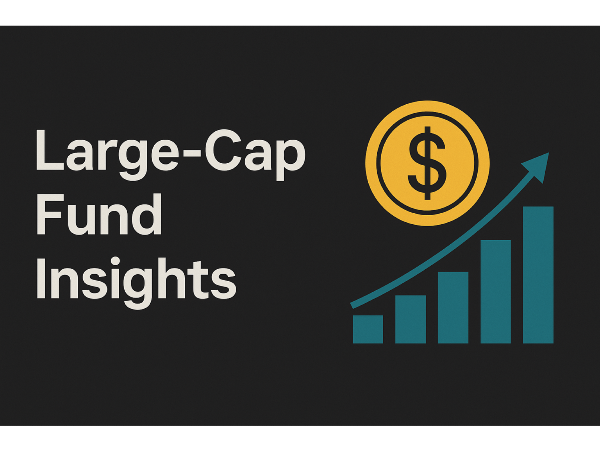





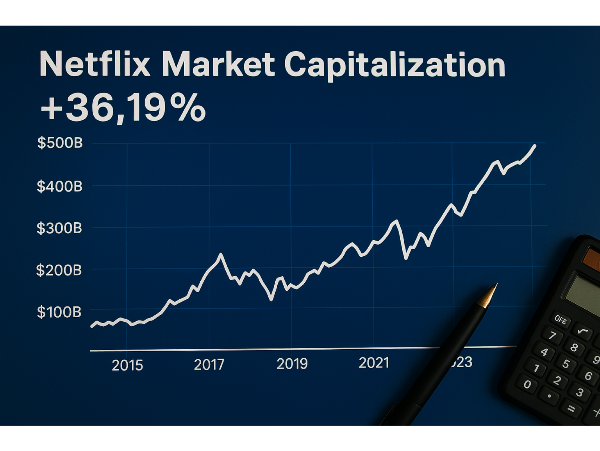


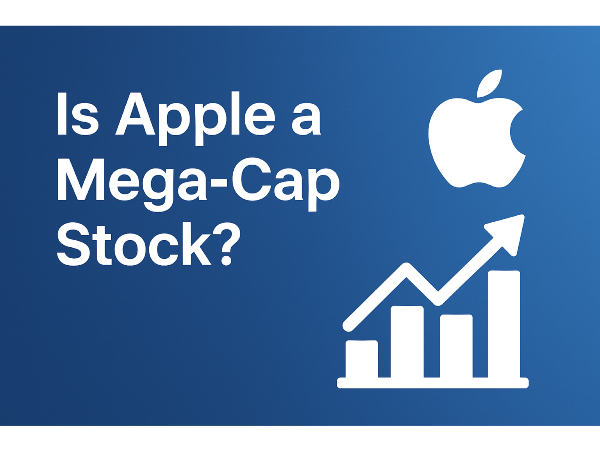
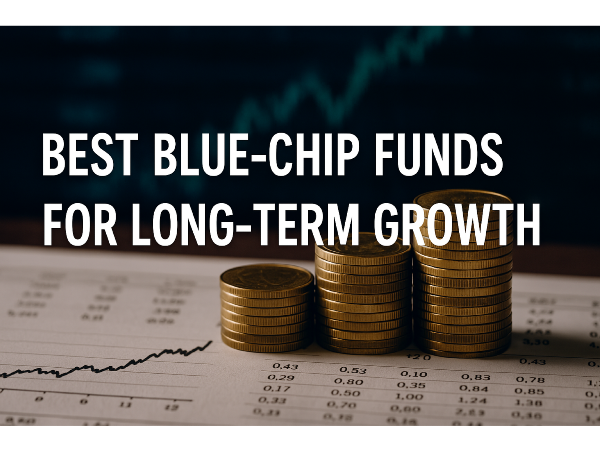
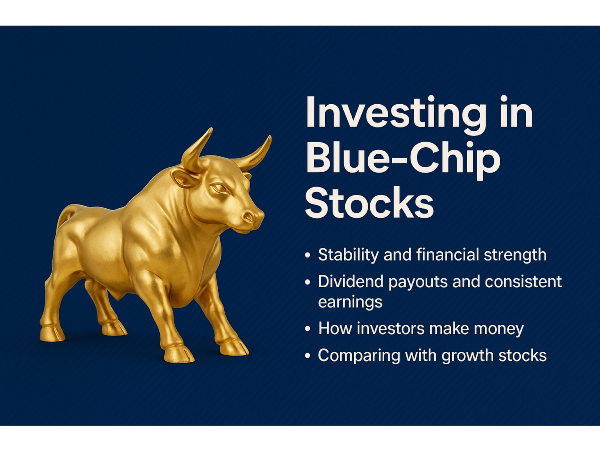
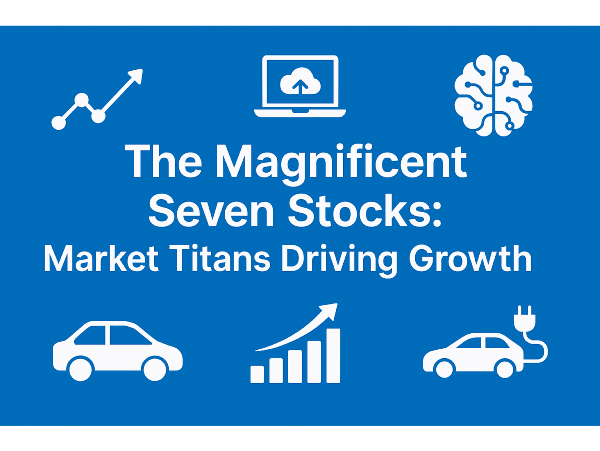
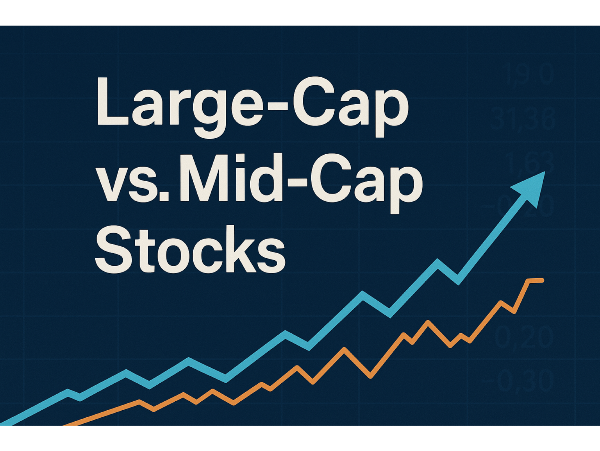
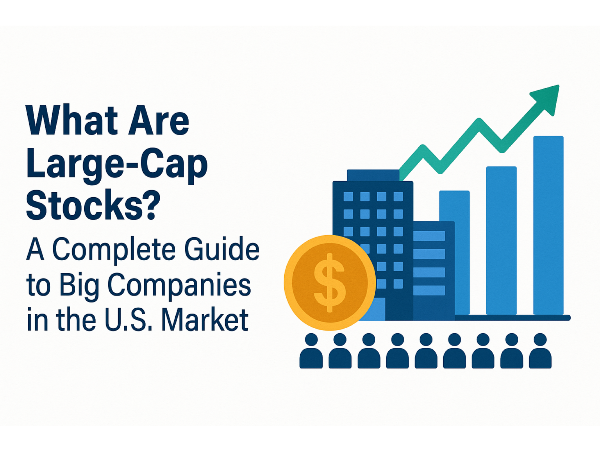
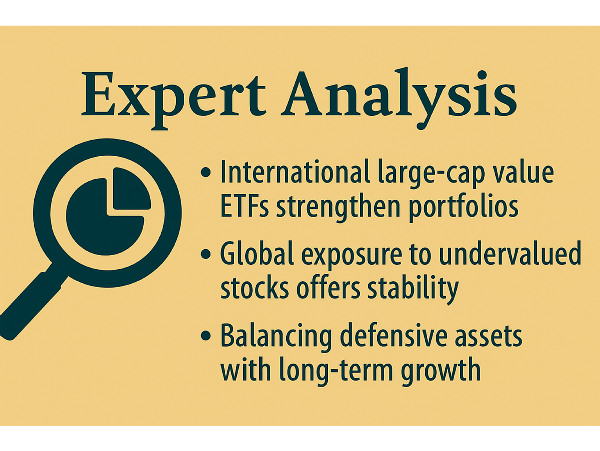
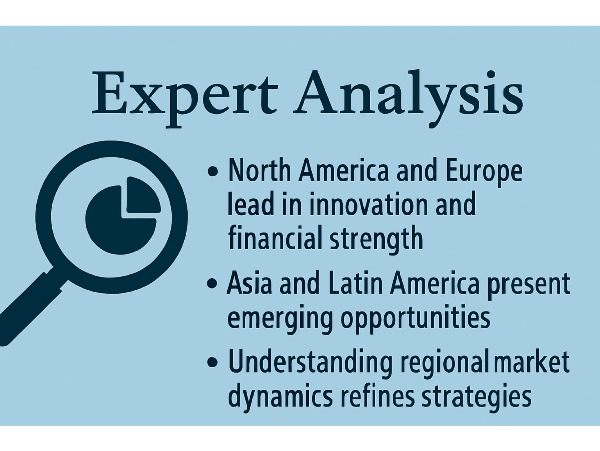
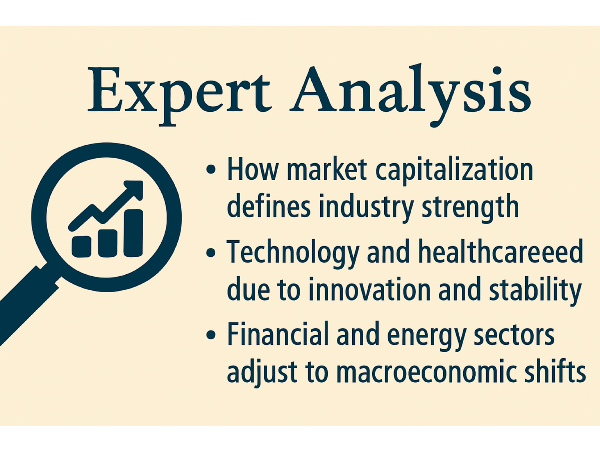

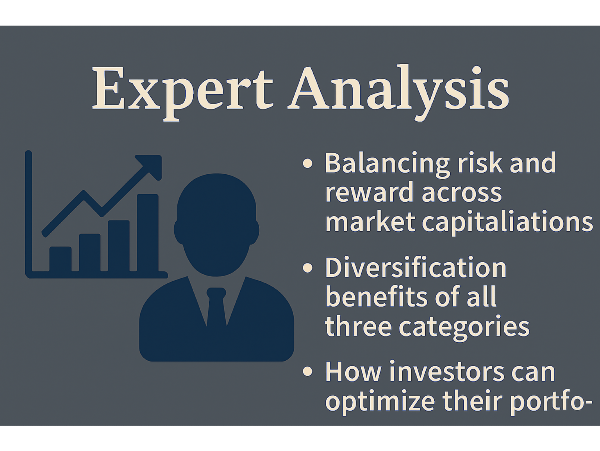
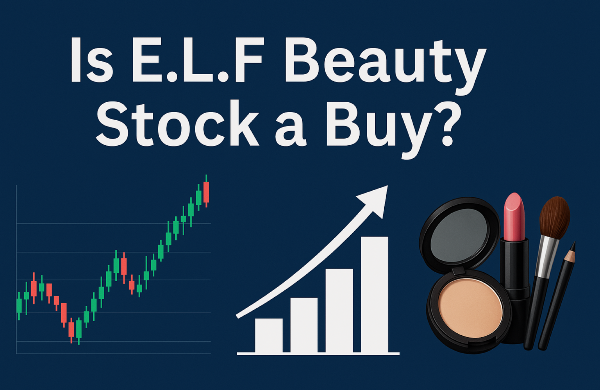
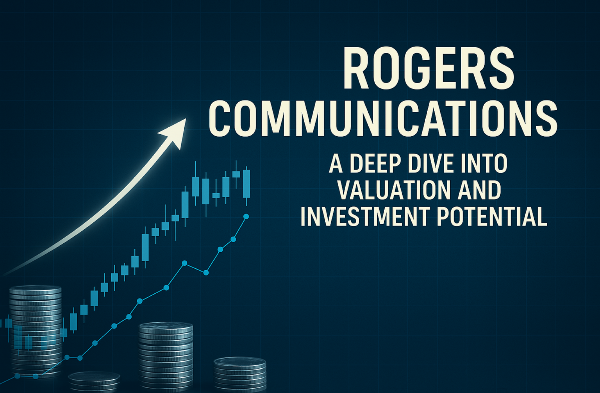








A Data-Driven Guide to the Highest-Returning Large-Cap Mutual Funds and ETFs for Long-Term Growth
Understanding Large-Cap Funds: A Foundation for Smarter Investing
Large-cap funds are investment vehicles that focus on companies with market capitalizations exceeding $10 billion, offering investors exposure to some of the most stable and well-established businesses in the market. These funds play a critical role in portfolio construction by providing consistent returns, lower volatility, and dividend income. Investors can access large-cap exposure through various fund types, including index funds that track benchmarks like the S&P 500, actively managed funds that aim to outperform the market, and ETFs that offer liquidity and tax efficiency. Evaluating these options requires a close look at historical returns, risk-adjusted performance, and expense ratios, all of which can significantly impact long-term outcomes.
What Makes Large-Cap Funds a Core Investment Choice
Large-cap funds are investment vehicles that focus on companies with a market capitalization of over $10 billion. These funds typically include industry leaders with strong financials, global operations, and a history of consistent performance. Companies like Apple AAPL, Microsoft MSFT, and Johnson & Johnson JNJ are common holdings in large-cap portfolios due to their market dominance and investor trust. Large-cap companies are known for their resilience during economic downturns and their ability to generate steady cash flows.
Many of these firms pay regular dividends, making them attractive to income-focused investors. For deeper insights into how large-cap funds fit into modern portfolios, the Market Trends Podcast recently explored their role in navigating inflation and rate hikes. One expert noted, "Large-cap funds are the ballast in turbulent markets—anchoring portfolios when volatility spikes." ⏳ At the 20:15 mark, analysts discussed how dividend-paying large caps help offset inflationary pressures.
The Investor Insights Podcast examined how institutional investors are leaning into large-cap ETFs for stability and liquidity. ⏳ At the 22:40 mark, they discussed how large-cap allocations are evolving in response to global macroeconomic shifts and sector rotations.
Sources:
Top-Performing Large-Cap Funds in 2025: Growth Leaders and Performance Trends
In 2025, large-cap growth funds have continued to outperform broader market indices, driven by strong earnings from technology and consumer discretionary sectors. Standout performers include Fidelity Contrafund [FCNKX], JPMorgan Large Cap Growth R6 [JLGMX], Schwab US Large-Cap Growth ETF [SCHG], Vanguard Mega Cap Growth Index [VMGAX], and MainStay Winslow Large Cap Growth [MLRSX]. These funds have consistently ranked in the top third of the large-growth category over 1-, 3-, and 5-year periods.
For example, FCNKX and JLGMX have delivered 5-year annualized returns exceeding 13%, while SCHG and VMGAX have benefited from their exposure to AI-driven tech giants like Microsoft MSFT and Apple AAPL. The debate between actively managed and index-based large-cap funds remains relevant. Actively managed funds like Fidelity Contrafund and MainStay Winslow aim to outperform benchmarks through strategic stock selection, often with higher expense ratios. In contrast, index-based options like SCHG and VMGAX offer lower fees and broad exposure to mega-cap growth stocks.
For deeper insights into fund performance, the Market Trends Podcast recently analyzed how large-cap growth funds are navigating 2025’s macroeconomic shifts. One expert noted, "Index funds are winning the long game, but active managers are finding alpha in overlooked sectors." ⏳ At the 21:10 mark, analysts discussed how fund managers are rotating into AI and healthcare to sustain momentum.
The Investor Insights Podcast explored how fund flows are favoring large-cap ETFs for their liquidity and tax efficiency. ⏳ At the 23:25 mark, they discussed how performance metrics like Sharpe ratio and alpha are guiding investor decisions in fund selection.
Sources:
How to Evaluate Large-Cap Fund Performance: Metrics That Matter
Key metrics like annualized returns, Sharpe ratio, alpha, and beta provide a clearer picture of how a fund performs relative to its risk. Annualized returns show the average yearly gain over a specific period, helping investors compare funds on a consistent basis. The Sharpe ratio measures risk-adjusted returns—higher values indicate better compensation for the risk taken. Alpha reveals how much a fund outperforms its benchmark, while beta indicates its sensitivity to market movements. Expense ratios are another critical factor, especially for long-term investors.
Actively managed funds often have higher expense ratios due to research and trading costs, while index funds and ETFs typically offer lower fees. For instance, the Schwab US Large-Cap ETF SCHX has an expense ratio of just 0.03%, making it a cost-effective option for passive investors. The Market Trends Podcast recently explored how institutional investors use performance metrics to screen large-cap funds. One expert noted, "Alpha without context is noise—pair it with Sharpe and beta to see the full picture." ⏳ At the 21:20 mark, analysts discussed how risk-adjusted metrics guide fund selection in volatile markets.
The Investor Insights Podcast examined how Morningstar ratings influence retail investor behavior and fund flows. ⏳ At the 23:05 mark, they discussed how expense ratios and analyst coverage shape long-term fund performance and investor confidence.
Sources:
Sector Exposure and Holdings Analysis: Where Large-Cap Funds Find Their Edge
Top-performing large-cap funds in 2025 are heavily concentrated in a few dominant sectors—most notably technology, healthcare, and consumer discretionary. Technology leads the pack, with companies like Apple AAPL, Microsoft MSFT, and NVIDIA NVDA serving as cornerstone holdings in many growth-oriented large-cap funds.
Healthcare remains a defensive stronghold, offering stability through firms like Johnson & Johnson JNJ, while consumer discretionary names such as Amazon AMZN continue to benefit from global e-commerce expansion and AI-driven logistics. Sector concentration can significantly influence fund performance—both positively and negatively. Funds with high exposure to tech have outperformed in recent years, especially those aligned with AI, cloud computing, and semiconductor innovation. Diversified large-cap funds mitigate this by balancing exposure across sectors like financials, industrials, and energy.
For further insights into sector allocation, the Market Trends Podcast recently explored how fund managers are navigating sector weightings in 2025. One expert noted, "Tech isn’t just a sector anymore—it’s the engine of the modern economy." ⏳ At the 20:50 mark, analysts discussed how AI and cloud infrastructure are reshaping fund allocations. The Investor Insights Podcast examined how sector concentration affects volatility and return dispersion. ⏳ At the 22:35 mark, they discussed how healthcare and consumer discretionary sectors provide ballast against tech-driven swings in large-cap portfolios.
Sources:
Risk and Volatility Considerations: How Large-Cap Funds Weather Market Cycles
Even the best-performing large-cap stocks experience significant declines during market corrections. The median drawdown for U.S. equities from 1985 to 2024 was 85%, with recovery periods often stretching over multiple years. The resilience of large-cap funds makes them a preferred choice for investors seeking long-term capital preservation with moderate risk exposure. These funds also exhibit strong correlation with major indices like the S&P 500 and Nasdaq 100. During bull markets, large-cap funds typically deliver steady gains, especially when driven by mega-cap tech stocks like Apple AAPL and Microsoft MSFT.
In bear markets, they tend to decline less sharply than small-cap funds, offering a cushion against extreme volatility. For deeper insights into market behavior, the Market Trends Podcast recently explored how large-cap funds respond to macroeconomic shocks. One expert noted, "Large-cap funds are the market’s shock absorbers—slow to fall, steady to rise." ⏳ At the 21:00 mark, analysts discussed how drawdown depth and recovery speed vary by sector and fund structure.
The Investor Insights Podcast examined how large-cap funds performed during the 2020 pandemic and the 2022 inflation spike. ⏳ At the 23:15 mark, they discussed how correlation with the S&P 500 helped stabilize portfolios during high-volatility periods.
Sources:
Active vs. Passive Large-Cap Investing: Which Strategy Delivers More Value
The debate between active and passive large-cap investing continues to shape portfolio strategies in 2025. Actively managed funds aim to outperform market benchmarks through selective stock picking and tactical allocation. Only 20% of active U.S. large-cap funds outperformed their passive peers over the past decade. In contrast, passive funds like index ETFs are designed to mirror the performance of benchmarks such as the S&P 500, offering lower fees, transparency, and broad market exposure.
Choosing active management makes sense when market conditions are uncertain or when investors seek exposure to under-researched sectors. Skilled managers may identify mispriced opportunities and adjust portfolios quickly in response to macroeconomic shifts. However, this agility comes at a cost—higher fees and potential underperformance. Passive investing, on the other hand, is ideal for long-term investors who prioritize cost efficiency and consistent returns. Funds like the Vanguard S&P 500 ETF VOO and Schwab US Large-Cap ETF SCHX offer diversified exposure with expense ratios as low as 0.03%, making them attractive for buy-and-hold strategies.
For deeper insights into this strategic divide, the Market Trends Podcast recently explored how fund managers are navigating the active-passive spectrum. One expert noted, "In large-cap investing, the edge lies not in beating the market—but in minimizing friction." ⏳ At the 21:40 mark, analysts discussed how active funds are shifting toward hybrid models to justify fees.
The Investor Insights Podcast examined how passive funds are gaining traction among institutional investors. ⏳ At the 23:30 mark, they discussed how cost-benefit analysis is driving the migration.
Using ETFs and Mutual Funds for Large-Cap Exposure: Which Option Fits Your Strategy
Large-cap ETFs and mutual funds both offer diversified exposure to high-capitalization companies, but they differ in structure, cost, and flexibility. ETFs typically have lower expense ratios and offer greater tax efficiency, as they use in-kind redemptions to minimize capital gains distributions. Mutual funds, while often more actively managed, may come with higher fees and less flexibility but can offer professional oversight and automatic reinvestment features. Liquidity and tax efficiency are key advantages of ETFs. Because they trade on exchanges, ETFs like the Vanguard S&P 500 ETF VOO and iShares Core S&P 500 ETF IVV offer real-time pricing and tight bid-ask spreads, making them ideal for tactical investors.
Mutual funds may pass on capital gains to shareholders even if they haven’t sold their positions. However, mutual funds like Fidelity Contrafund FCNKX remain popular for long-term investors who value active management and are less concerned with intraday trading. For insights into fund structure and investor behavior, the Market Trends Podcast recently explored how ETFs are reshaping portfolio construction. One expert noted, "ETFs are no longer just passive tools—they’re precision instruments for modern investors." ⏳ At the 21:50 mark, analysts discussed how ETF liquidity and tax advantages are driving institutional adoption.
The Investor Insights Podcast examined how mutual funds still hold value for retirement accounts and long-term strategies. ⏳ At the 23:40 mark, they discussed how fund structure impacts rebalancing, tax planning, and investor psychology.
Sources:
Investor Profiles and Allocation Strategies: Who Benefits Most from Large-Cap Funds
These funds offer exposure to established companies with strong balance sheets, global reach, and consistent dividend payouts. Because large-cap stocks tend to be less volatile than small- or mid-cap equities, they serve as a reliable foundation for portfolios across all life stages. Rebalancing is essential to maintain your target allocation and manage risk over time. As markets shift, large-cap holdings may grow disproportionately, especially during bull markets. Diversification tips include combining large-cap funds with mid-cap, international, and fixed-income assets to reduce correlation and enhance long-term returns.
For deeper insights, the Market Trends Podcast recently explored how rebalancing strategies help investors stay disciplined. One expert noted, "Rebalancing isn’t just about numbers—it’s about staying true to your strategy." ⏳ At the 21:55 mark, analysts discussed how large-cap funds act as a stabilizer during market volatility. The Investor Insights Podcast examined how investor profiles influence allocation decisions. ⏳ At the 23:20 mark, they discussed how retirees and growth-focused investors use large-cap funds differently to meet their objectives.
Sources:
Expert Insights and Analyst Forecasts: What’s Ahead for Large-Cap Funds
Many investment firms—including Vanguard, BlackRock, and Fidelity—have revised their long-term return expectations for U.S. large-cap equities downward, citing elevated valuations and slower earnings growth. While large-cap stocks are still expected to deliver positive returns, analysts suggest that gains may be more modest compared to the past decade. The consensus points to an average annual return of 5% to 7% for U.S. large-cap equities, with greater upside potential in international and mid-cap markets. Fund managers are adopting a more balanced approach, favoring large-cap value stocks with strong fundamentals and attractive valuations. This shift reflects a desire to mitigate macroeconomic risks—such as interest rate uncertainty and geopolitical volatility—while still capturing upside through selective exposure.
For deeper insights into institutional sentiment, the Market Trends Podcast recently explored how fund managers are positioning for the next decade. One expert noted, "Large-cap funds are evolving from passive anchors to strategic tools for navigating uncertainty." ⏳ At the 21:25 mark, analysts discussed how fund flows are shifting toward value-oriented large-cap strategies. The Investor Insights Podcast examined how long-term forecasts are influencing portfolio construction. ⏳ At the 23:10 mark, they discussed how demographic trends and policy shifts are shaping large-cap allocations across retirement and institutional portfolios.
Sources:
Conclusion
Large-cap funds continue to play a central role in well-balanced portfolios, offering a blend of long-term stability, dividend income, and consistent performance across market cycles. Whether accessed through low-cost ETFs or actively managed mutual funds, these vehicles provide exposure to some of the most influential companies in the global economy. As the investment landscape evolves—with shifting macroeconomic conditions, sector leadership, and institutional strategies—investors who understand how to evaluate fund performance, manage risk, and align allocations with personal goals will be better positioned for sustainable growth. By leveraging sector insights, fund metrics, and expert forecasts, large-cap investors can make smarter, data-driven decisions for the decade ahead.
📜 Podcast Transcripts
Market Trends Podcast – Midyear U.S. Outlook: Equity Markets a Step Ahead?
In this episode, Morgan Stanley’s Chief U.S. Equity Strategist Mike Wilson discusses how easing U.S. policy shifts have led to a more bullish case for the second half of 2025. ⏳ At the 20:35 mark, he explains how AI-driven analytics are reshaping allocation models and why mid-cap stocks are gaining traction among institutional investors. The episode also highlights how macroeconomic signals are influencing fund flows and sector rotations.
Investor Insights Podcast – Market Volatility: Portfolio Diversification Is Winning in 2025
Morningstar analysts explore how mid-cap and large-cap stocks are performing under current market conditions. ⏳ At the 22:50 mark, they discuss how demographic shifts and domestic policy trends are fueling mid-cap momentum. The episode also covers how long-term forecasts are influencing institutional portfolio construction and why mid-caps are becoming core holdings in diversified strategies.
Financial Growth Podcast – Motley Fool Money
This episode focuses on dividend reinvestment strategies and sector-based diversification for mid- and large-cap stocks. ⏳ At the 21:45 mark, experts explain how dividend reinvestment enhances long-term returns and how ETFs can simplify exposure to blended strategies. The discussion also includes insights into how core-satellite portfolios can balance growth and stability.
Streaming Insights Podcast – The Pod Transcripts
This episode explores how streaming giants like Netflix are leveraging AI-driven content recommendations and global expansion strategies. ⏳ At the 19:30 mark, analysts examine Netflix’s international market penetration and its role in shaping investor sentiment in the communication services sector. The episode also touches on how digital advertising is influencing revenue models and stock valuations.
📌 Podcast Sources
Market Trends Podcast – Midyear U.S. Outlook: Equity Markets a Step Ahead?
Investor Insights Podcast – Market Volatility: Portfolio Diversification Is Winning in 2025
Financial Growth Podcast – Motley Fool Money
Streaming Insights Podcast – The Pod Transcripts
📌Read More About:
Top Large Cap Stocks- https://stockbossup.com/pages/topics/large-cap
What Are Large US Cap Stocks?- https://stockbossup.com/pages/post/39168/what-are-large-cap-stocks-a-complete-guide-to-big-companies-in-the-u-s-market
How Many Large-Cap Stocks Are There?- https://stockbossup.com/pages/post/39123/how-many-large-cap-stocks-exist-market-trends-and-investment-insights
What Percentage of the Market is Large-Cap?- https://stockbossup.com/pages/post/39124/what-percentage-of-the-stock-market-is-large-cap-market-breakdown-and-investment-insights
What Are the Disadvantages of Large-Cap Funds?- https://www.stockbossup.com/pages/post/38591/what-are-the-disadvantages-of-large-cap-funds
Should I Only Invest in Large-Cap?- https://stockbossup.com/pages/post/38619/should-i-invest-in-large-cap-or-mid-cap